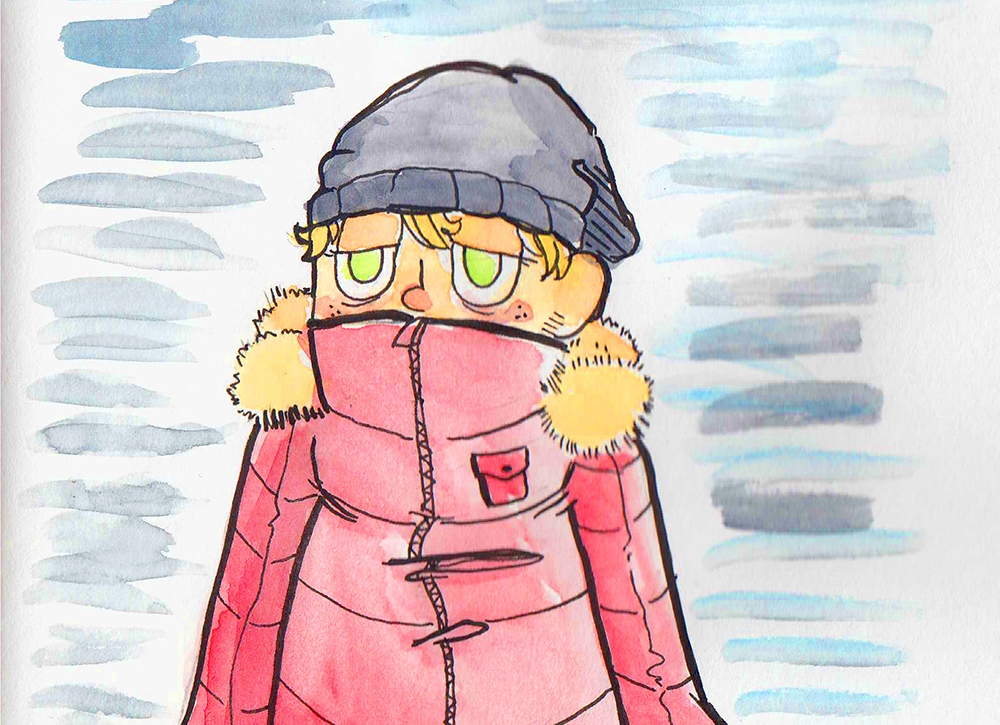Angelica Babiera | Staff Writer
Featured illustration: Many try to self-diagnose SAD, but seeking professional help is encouraged. | Jeffery Kingsley
One of many cultural shocks that immigrants face is acclimating to the weather. My family and I moved here from the Philippines when I was 10, and my father was shocked to hear his coworkers talk about seasonal depression. It just seemed to us that people are less happier when the colder months came—the “-ber” months of September to December.
“Winter is hard emotionally for many people […] because of the cold, there’s less light and everyone is receptive to the effects of that in terms of their mood. Some people, however, do become very predictably depressed and it’s not related to life events. That’s a key in calling it a Seasonal Affective Disorder,” says Dr. Myriam Mongrain, a psychology professor who specializes in depression, mood and personality.
There are clear trends that SAD occurs more frequently in northern countries that experience colder weather and lack of sunshine.
Seasonal affective disorder, or SAD, is a complicated diagnosis, adds Dr. Mongrain. There are a range of possible symptoms, including hypersomnia, weight gain, diminished interest in activities, depressed mood for most days and recurrent thoughts of death, among others.
“When you have someone who presents at least 5 of those symptoms, and they feel it almost every day for almost two weeks, there we have an instance of a major depressive episode, and this is a standalone diagnosis,” says Dr. Mongrain.
Experts say it is imperative for people diagnosed with SAD to seek out the proper treatment. Often, light treatment is prescribed, and is very important since it makes a big difference among clients.
When a client or a person shows symptoms, they often try to then help themselves because their depression is clearly related to the seasons, and they don’t get depressed otherwise. With this diagnosis, light therapy is very important and makes a big difference, she adds.
SAD can happen to anyone, but occurs more frequently to those over 20 years of age. Additionally, women have been shown to be more affected by SAD than men. Family history and past personal history with mental illness can also be risk factors.
“With winter blues, I would say we have a large portion of the population […] in Canada where after three weeks with no sunshine, people start to drag their feet. They’re not happy.
“I think those who cope well with this are those who are able to take advantage of opportunities to get some light: people who do winter sports in the snow, that’s perfect. What we’re looking for with winter blues is bright lights,” she says.
“The lights that people buy, usually, are just high-intensity SAD lights. Usually we prescribe them for 20 minutes in the morning,” says Dr. Mongrain.
“It’s a question of bringing back those levels of serotonin in the brain for a more optimum level because that’s what drives your moods.”
The neurotransmitter serotonin is a chemical that researchers regard to as responsible for mood balance, and that a deficiency of it can lead to depression. According to Dr. Mongrain, when bright light shines on your eyes, the back of the eyeball and retina, it triggers the serotonin in those transmitters.
Seasonal affective disorder is often written off as just winter blues, but can be debilitating to one’s normal daily function. Regardless of how silly it may feel, seeking help to improve your mental health is an important task.


